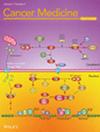Opportunistic Salpingectomy in Non-Gynecologic Surgeries: Barriers and Facilitators From a Healthcare Provider Perspective
Abstract
Objective
This study identifies barriers and facilitators for implementing opportunistic salpingectomy (OS) during non-gynecological abdominal surgeries from a healthcare provider perspective.
Methods
From October 2023 to July 2024, a mixed-method study was conducted. The qualitative phase involved semi-structured focus group interviews and individual interviews with specialists in surgery (gynecologists, general surgeons, urologists, and residents) and policymakers to identify barriers and facilitators for implementing OS during non-gynecological surgery. The quantitative phase consisted of a cross-sectional web-based survey assessing the importance of these barriers and facilitators. The study utilized the standardized implementation frameworks to categorize the factors into six domains: innovation, patient, healthcare professional, social setting, organization, and economic and financial context.
Results
In the qualitative phase, 38 healthcare professionals and policymakers identified 38 barriers and 28 facilitators. Barriers were found in all domains and mainly included increased workload, unclear invoicing, and variations in eligible surgeries. Facilitators included the poor prognosis of ovarian cancer, simplicity of OS, and availability of counseling materials. The quantitative survey revealed that 75% of gynecologists, 60% of surgeons, and 61% of urologists supported offering OS during non-gynecological abdominal surgeries. Barriers identified included the ambiguity regarding which patients are eligible for OS, the perceived complication risks of OS, the increased workload as a result of adding OS, and the unclarity around invoicing an OS. Facilitators included the poor prognosis of ovarian cancer, the availability of uniform counseling materials, education on counseling and technical performance of OS, involvement of a gynecologist during the counseling, and clear agreements between the departments within hospitals.
Conclusions
Key barriers to OS implementation in non-gynecological surgeries include unclear invoicing and increased workload, while significant facilitators are the availability of counseling materials and education on counseling and technical performance of OS. Addressing these barriers and leveraging facilitators could enhance OS adoption, potentially reducing ovarian cancer incidence.


 求助内容:
求助内容: 应助结果提醒方式:
应助结果提醒方式:


